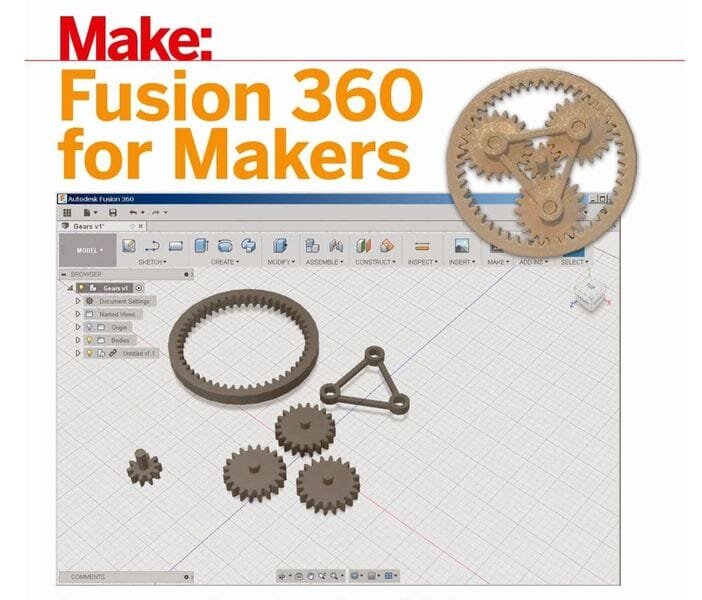![Fusion 360 for Makers [Source: Amazon]](https://fabbaloo.com/wp-content/uploads/2020/05/image-asset_img_5eb08cbedb42a.jpg)
This week’s selection is “Fusion 360 For Makers” by Lydia Sloane Cline.
Autodesk Fusion 360 is one of the more popular 3D CAD systems used to develop 3D models for 3D printing, particularly for those new to 3D modeling. While it is perfectly suitable for professionals as it includes a broad complement of advanced features, it also can also be a terrific introductory modeling tool.
That is a significant advantage for the tool, as those who learn 3D modeling on introductory tools are often faced with learning a more advanced tool after they exhaust the features of the introductory tool. By learning Autodesk Fusion 360 right from the beginning, one can gradually move into more advanced functionality as required without the need to move to a new 3D modeling tool.
Autodesk Fusion 360 is available not only as a paid product, but also free of charge for qualified users, such as students, educators, startup company staff and even individual hobbyists. Because of their generous licensing programs, Autodesk has attracted many new 3D modelers to their software.
Autodesk provides a large number of online tutorials and in particular videos to help new Fusion 360 users to get up to speed, but there’s nothing better than having a book you can refer to, particularly at the initial stages.
This book takes the reader through the basics of starting with Autodesk Fusion 360, and assumes you know little to start. It’s ideal for new Fusion 360 users.
The book commences with the obvious first step: explaining the basic interfaces and concepts used throughout Autodesk Fusion 360.
Then there is a large section dedicated to perhaps the most important feature in Fusion 360: sketching. You might think this is strange, given that the goal of a 3D CAD tool is to produce 3D objects. So why would 2D sketching be important? It turns out that most of the custom 3D shapes you’ll build will start out as 2D curves and drawings. These are extruded, revolved and lofted from 2D into 3D structures.
Once you understand the general process of 2D sketching, the book moves on to leveraging them with all of Fusion 360’s numerous 3D creation tools. Then the book proceeds to explain how one can modify the 3D shapes using a number of modifiers, such as fillets, sculpting and changes in object parameters.
At this point, you should be able to design simple objects, and the book will take you step-by-step through the design of several objects, ranging from simple to more complex. Some of the projects include a vase, wall art, chairs, and a fidget spinner.
One of the more interesting examples is a gear design, based on using a pre-made gear from the vast McMaster-Carr online library. The book shows how to create a planetary gear mechanism, and if you can do that, you know how to design many other things.
Finally, the book then takes the reader through the process of physically making the design. This takes two forms: one involves slicing the 3D model for 3D printing, and the other involves creating a tool path for CNC machining using Autodesk Fusion 360’s CAM mode.
If you’re interested in being able to design your own 3D models, Autodesk Fusion 360 is a great tool to start with. Alternatively, if you’ve been using an introductory 3D modeling tool and need something more powerful, consider a jump to Autodesk Fusion 360. In both cases, this book can help you.
Via Amazon

